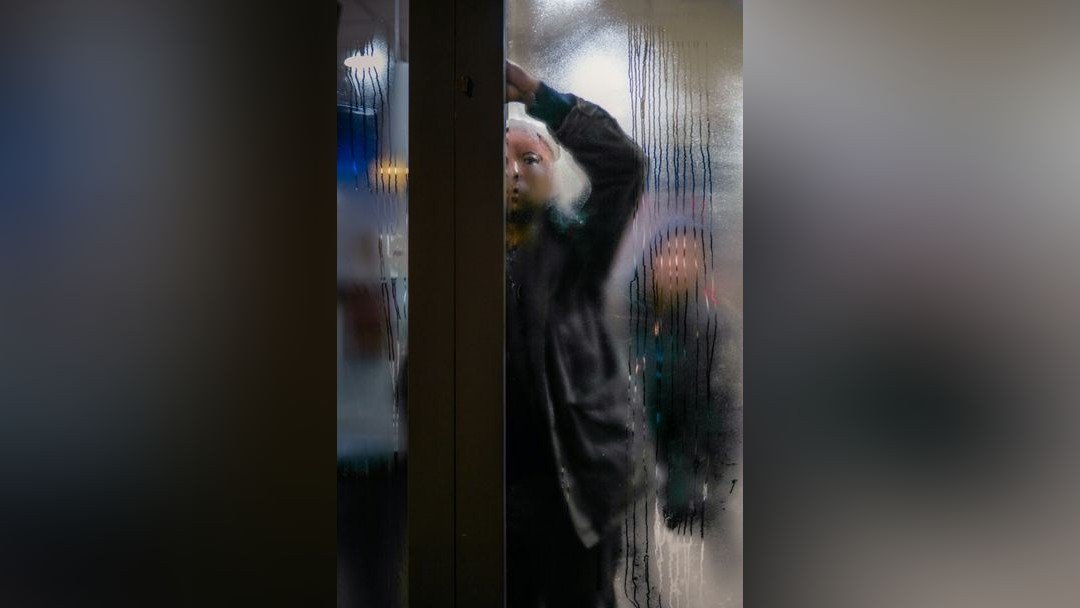The UK Modern Slavery Act at nine: an assessment

By Jasmin Kreutzer and Christos Kypraios
Jasmin Kreutzer and Christos Kypraios review the progress made by the Modern Slavery Act since its implementation and the recent reversal of that progress being caused by the current government’s approach to immigration
The UK Modern Slavery Act 2015 had three main aims: improving the law enforcement tools for fighting modern slavery, ensuring suitably severe punishments for perpetrators, and improving the protection and support available to victims. Its key provisions included the creation of new modern slavery offences and the introduction of a statutory defence for victims; the new roles of independent child trafficking advocates and an Independent Anti-Slavery Commissioner; the introduction of restriction and reparation orders; an expansion of law enforcement methods; and annual reporting duties for companies on their supply chains. The Act made the UK one of the first countries to introduce modern slavery legislation, and encouraged Australia, the US, Germany, Norway and other countries to follow suit.
However, the Act has also been impacted by recent political developments and shifting government priorities. On 28 February, a recently appointed House of Lords Select Committee released a call for written evidence regarding its inquiry on the Act, which closed on 27 March. The overall purpose of this inquiry is to consider the Act’s impact and efficacy in the nine years since its implementation. The Committee also asked for submissions covering the impact of recent legislation on the Act, whether it has remained up to date with developments in modern slavery, the efficacy of its key provisions, and the role of the Independent Commissioner. In this article, we will briefly assess the impact of the Act on legislation and vice versa, on prosecution and enforcement, as well as provide some concluding remarks, looking also at the victims.
A shifting legal landscape
One of the intentions of the Act was to unify and simplify the existing provisions on modern slavery and human trafficking into a single piece of legislation. Thus, the Act provided a basis for legislation on modern slavery in Scotland (Human Trafficking and Exploitation (Scotland) Act 2015) and Northern Ireland (Human Trafficking and Exploitation Act (Northern Ireland) 2015), which were passed in the same year and provided stronger victim support tailored specifically to the devolved administrations.
Since the passing of the Act, though, the legal framework has been affected significantly by a changed structure of labour laws and immigration laws. Many of the UK’s labour laws were derived from EU legislation, meaning that since Brexit the UK has not been bound to follow EU law in this field. Strong labour laws are an essential part of preventing modern slavery and trafficking, and the absence of robust updated labour laws has been a limiting factor for the efficacy of the Act since 2020. Additionally, the Act has been impacted by an increasing conflation of immigration with modern slavery. Brexit, for which migration was a key issue, also played a part in this development. New immigration laws from 2022 and 2023 have amended and partly undermined the Act, complicated the legal landscape on modern slavery and undone the effect of unity that the Act had provided.
Three laws in particular have affected the Act: the Nationality and Borders Act 2022, the Illegal Migration Act 2023, and the Rwanda Treaty and Bill 2023. The Nationality and Borders Act altered victim support and protection conditions. This includes a shortening of the recovery period for potential victims that follows a positive reasonable grounds decision from 45 to 30 days (Section 61). That means that the Home Office is only given 30 days to decide whether a person qualifies for a positive conclusive grounds decision. The Nationality and Borders Act also contains a section on disqualifying victims from protection if the Home Office is satisfied that a claim was made in bad faith or by a person who threatens public order (Section 63). However, the conditions for disqualification also include the condition that ‘the person otherwise poses a risk to the national security of the United Kingdom’. This formulation is open to interpretation and could be used to disqualify victims on a wide range of grounds. In the case of a disqualification, no appeal is possible. The Home Secretary is then not prohibited from removing the person and is not required to grant them limited leave to remain in the UK.
In October 2022, the conflation of immigration with modern slavery reached a new dimension following a speech by the then Home Secretary Suella Braverman. Braverman claimed that modern slavery laws were being abused by migrants in order to receive leave to remain in the UK. Following the speech, the Home Office re-assigned the oversight of the modern slavery brief from the safeguarding minister to the immigration minister. Now, the brief sits partly with the safeguarding minister and partly with the minister for illegal migration. The conflation of the two issues overlooks the fact that a large group of potential and confirmed victims of modern slavery are UK nationals (25% of referred potential victims in 2023; Modern Slavery: National Referral Mechanism and Duty to Notify statistics UK). Through the conflation, practitioners also face more challenges in navigating the Modern Slavery Act.
The Illegal Migration Act went one step further by disapplying certain provisions for victim protection. According to Section 22, modern slavery provisions from the Nationality and Borders Act are disapplied if a person fulfils the criteria for illegal migration, which include being trafficked. Even if an illegally migrated person received a positive reasonable grounds decision, the provisions for their protection would not apply. As victims of trafficking arrive illegally against their will, the amendments introduced by the Illegal Migration Act partially equate the perpetrator’s actions with those of the victim and, thus, contradict the intentions of the Modern Slavery Act.
Lastly, if passed, the Safety of Rwanda (Asylum and Immigration) Bill 2023 would have even wider ranging implications for non-UK victims of modern slavery and trafficking. Legal analysis conducted by the Modern Slavery and Human Rights Policy and Evidence Centre shows that the Rwanda Treaty and Bill are ‘not compliant with the UK’s international legal obligations on modern slavery and human trafficking’. On 13 March, the House of Lords passed amendments to the bill which strengthen its adherence to domestic and international law and provide other key additions, providing some development towards compliance with the UK’s international obligations.
While the UK was a leader in modern slavery laws in 2015, the current government approach undoes earlier progress. The changes to the National Referral Mechanism (NRM) caused by the new legislation make it more difficult for victims to bring forward modern slavery claims. And for practitioners, it is becoming increasingly difficult to defend non-UK clients with such claims. Navigating the legal framework on the issue requires much cross-referencing and an astute understanding of immigration politics, while at the end of the day much of the decision-making power rests with the Home Office and the Home Secretary.
How much force is there behind enforcement?
The Modern Slavery Act introduced new and more severe penalties for modern slavery and human trafficking offences. Before the Act, these offences had to be prosecuted under existing laws and often indirectly. Some of the laws used prior to the Act include the Slavery Abolition Act 1833, the Immigration Act 1971, the Criminal Law Act 1977, the Protection of Children Act 1978, the Sexual Offences Act 2003, the Human Trafficking Act 2004 and the Asylum and Immigration Act 2004. Beyond consolidating the legal framework, the Modern Slavery Act also introduced specific offences relating to slavery, servitude and forced or compulsory labour, and human trafficking. It also introduced protection orders that allow law enforcement to restrict the activities of individuals suspected of offences, and enhanced sentencing provisions. Businesses are also identified as potential contributors to modern slavery offences in the so-called transparency clause (Section 54), which requires companies with a total turnover of over £36 million annually to provide a slavery and human trafficking statement for each financial year.
Part of the impact of the Act can be assessed by looking at the development of the prosecution rates since 2015. When doing so, it is important to keep in mind that the number of cases is small, that the offences are complex in nature, and that the time required to conclude a case varies widely. The available data on prosecution under the Modern Slavery Act as a principal offence shows the following: 12 commenced prosecutions for 2015, 51 for 2016, 130 for 2017, 141 for 2018, 68 for 2019, and 89 for 2020 (UK annual modern slavery reports). No later reports or data on principal offence prosecution are available. Between 2015 and 2020, prosecution rates increased by approximately 640%; meanwhile, the Home Office notes that the number of referrals through the NRM has increased by over 600% since the passing of the Act. Although it is difficult and potentially problematic to draw definitive conclusions from these numbers, they point towards the proportional development of referrals and prosecutions.
When it comes to commercial organisations, there are no provisions for prosecution based on the failure to publish an annual statement. Considering the important role that organisations play in the existence of modern slavery, this lack of enforcement is a significant gap. In 2021, the House of Commons Committee on Business, Energy and Industrial Strategy published a report on forced labour noting that the transparency clause ‘has not kept pace with changes in business supply chains’ and that the Act is ‘out of date [and] has no teeth’. The Committee ‘do not accept that businesses should be excused from doing basic due diligence,’ states the report on Uyghur forced labour in Xinjiang and UK value chains. The Committee recommended that the government ‘amend and strengthen the Modern Slavery Act’, ‘enhance the transparency and accessibility of modern slavery statements’ and ‘develop options for civil penalties in the event of non-compliance’. In an earlier government response to a consultation on supply chain transparency, the Home Office stated that they will ‘consider enforcement options in line with the development of the Single Enforcement Body’. The response shows that introducing penalties for companies is a low priority for the government. Without such penalties, the Modern Slavery Act can only have limited impact. Practitioners should look forward to and support the introduction of civil penalties, as they would not only help reduce modern slavery incidents in supply chains, but would also be advantageous for improving the corporate image.
The gaps in the data on prosecution and enforcement partly arise from the lack of reports in recent years. This lack is connected to the fact that modern slavery is becoming a lower priority for the Home Office compared with immigration. It is also related to shortfalls in the implementation of the Independent Anti-Slavery Commissioner. The Commissioner is tasked with writing annual reports, recommendations, providing information, training and consultations, as well as cooperating with relevant public authorities and helping carry out research. However, as with other aspects of the Act addressed above, the Commissioner has not been able to be as impactful as they could be. For 18 months, between May 2022 and December 2023, the role was vacant. The new Commissioner, Eleanor Lyons, told the House of Lords Select Committee in February that her ability to execute her functions will also be restricted, her budget will be cut by 5% every year in office, affecting her ability to build a team and travel for the role. Furthermore, the independence of the Commissioner is limited. The recruitment process for staff is managed by the Home Office, including sign offs and the need for special permission to recruit from outside the Home Office. The Secretary of State also has a right to ask the Commissioner to omit certain information from a report (Modern Slavery Act, Section 41(7)).
Victims or criminals?
The coupling of immigration with modern slavery and trafficking has increased dramatically since 2015 and made it difficult to assess the impact of the Act on legislation, prosecution and enforcement. Another area impacted is that of people with lived experience of modern slavery, which we are going to touch upon briefly in this last section of the article.
Under Section 45 of the Act, victims of modern slavery are provided with a statutory defence if they committed a criminal act while being a victim. A person is not found guilty for committing an offence if the compulsion to the act can be attributed to their slavery or exploitation and if ‘a reasonable person in the same situation […] would have no realistic alternative to doing that act’ (Modern Slavery Act, Section 45(1)). The introduction of the statutory defence formed an important step in victim support and in acknowledging the vulnerability of victims. It also helped avoid their criminalisation. However, because of the immigration legislation passed in 2022 and 2023, illegally trafficked victims and others who arrive in the UK via non-official means do not have protection when coming forward with their cases and are instead declared ‘illegal’ and criminalised. In such cases, victims end up having to carry much of the burden of their situation. The sensitive topic of the victims, and the full impact of the Modern Slavery Act, as well as of subsequent legislation on their protection and support, warrants further analysis beyond the scope of this article (see for example the Modern Slavery PEC survivor support).
Overall, the Modern Slavery Act brought about progress in terms of prosecution, including the unification of modern slavery-related offences into the Act, which previously had to be addressed via other laws. Some areas of enforcement outlined in the Act, such as the Anti-Slavery Commissioner, do not currently seem to be prioritised by the government or the Home Office, however. This is not merely slow progress, but in parts the result of the government’s shifting priority towards illegal migration. This development poses great challenges and risks for the Modern Slavery Act in the near future – both for victims and for practitioners. How can we make sure that victims, who are now faced with the new complexities of the NRM and the risk of criminalisation, are able to navigate the system? How can we give the same level of support to both UK and non-UK potential victims? And, as practitioners, how can we maintain an overview of the legislative and political changes? These will be questions for the coming years.
Note: Dr Christos Kypraios is a Senior Management Board member, Modern Slavery and Human Rights Policy and Evidence Centre (MS PEC). Opinions expressed are solely the author’s own and do not express the views or opinions of MS PEC.

